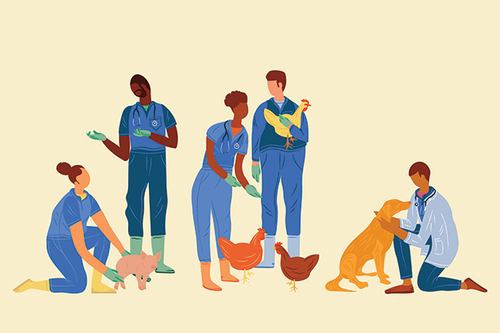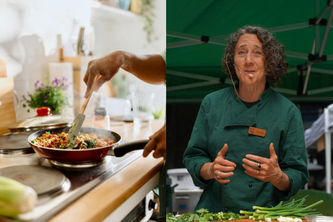
The recent COVID-19 outbreak is a profound example of the ties between human and veterinary medicine. Like few other diseases, the pandemic brings into focus the role of One Health—the relationship between humans, animals, and the environment.
University of Minnesota College of Veterinary Medicine (CVM) faculty are using their expertise to help the hospitals at the U of M and in the local community save human lives.
Matthew Aliota, an assistant professor in CVM’s Department of Veterinary and Biomedical Sciences, realized in January how quickly the novel coronavirus was spreading and began searching for a way he could help slow its spread.
Aliota works with highly pathogenic viruses, particularly those that spread to humans through ticks and mosquitos. His previous work has involved the research response to the Zika virus, which continues to spread across the Americas.
“I have training in both biodefense and emerging infectious disease,” says Aliota. “My research is dedicated to viruses that require high containment, so my expertise is well-suited to address a public health threat like COVID-19.”
Aliota says the role he could play became more apparent when cases of COVID-19 spiked in the United States in March. “It was clear that testing was an issue,” he says.
Meanwhile, Ryan Langlois, an assistant professor in the Department of Microbiology and Immunology at the U of M Medical School, studies influenza and how that virus is able to escape seasonal immunity by rapidly adapting. When COVID-19 became a global pandemic, Langlois shifted his focus to coordinating clinical trials to help scientists better understand the coronavirus. He’s also evaluating three drug therapies that may be successful in inactivating the virus.
In order to do that, Langlois’ team must extract RNA from swabs taken from people enrolled in the trials before they can determine the impact of each therapy—a time consuming process.
So Langlois turned to Aliota, and the teams are collaborating to process samples more efficiently. Their efforts have helped mitigate sample build-up, accelerating crucial analysis that could lead to COVID-19–fighting drugs.
“These efforts are essential for real-time decision making for patients enrolled in these critical studies,” says Langlois.
See more ways in which the College of Veterinary Medicine is helping the community during COVID-19, as well as its many ongoing COVID-19 research projects.
Image credit: Artwork by Megan Murrell.




